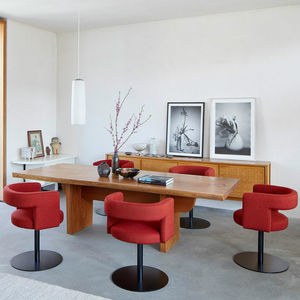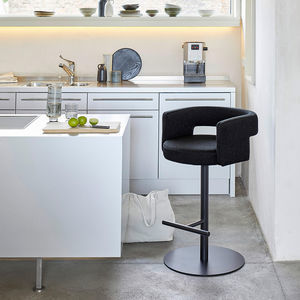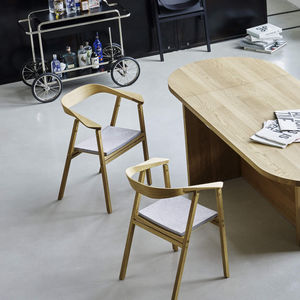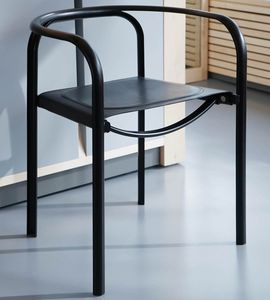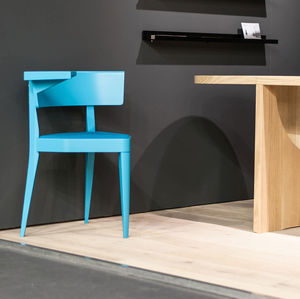
- Company
- Products
- Catalogs
- News & Trends
- Exhibitions
Bauhaus design armchair D51fabricleatherwooden













Add to favorites
Compare this product
Characteristics
- Style
- Bauhaus design
- Seat material
- fabric, leather
- Frame material
- wooden
- Options
- with removable cushion
- Color
- gray, black, red, customizable color
- Designer
- by Walter Gropius
- Market
- commercial
- Base type
- 4-legged
- Base material
- wooden base
- Armrest
- with armrests
- Motif
- plain
- Seat height
46 cm
(18.1 in)- Total height
79 cm
(31.1 in)- Total width
60 cm
(23.6 in)- Total depth
56 cm
(22 in)
Description
Gropius’ D51 chair from 1922/23, with its backward-jutting armrests and straight back, looks pretty austere. “Straighten up,” it seems to whisper to the sitter. Its four wooden legs are arranged at an offset. The rear legs support the backrest, the front legs sweep freely into the room together with the protruding armrests. This is a small piece of architecture created by Walter Gropius, linear and constructive. The chair and the D51-2 and D51-3 furniture series it gave rise to are a perfect match for the minimal architecture of the Fagus factory with its typical unsupported corner. This factory was a cradle of modernism.
When Walter Gropius was commissioned to design the Fagus factory in the small town of Alfeld an der Leine in Lower Saxony in 1911, nobody would have imagined that he would make history. But the architect did and simultaneously revolutionised the world of construction. Instead of choosing a historistic façade, he surrounded the production hall with a light curtain wall. The walls dissolved into large glass surfaces. Daylight, sun and air, the triad of modernity, are the driving forces towards a liberated architecture that seeks its rules solely in the necessities of the building project.
As it happened, over the course of time, this story was interwoven with Tecta’s story. Axel Bruchhäuser, partner of the company since 1972 and an important witness of the Bauhaus generation, recalls: “We sat in the foyer on chairs by Walter Gropius, of which the owners knew nothing at all.
Catalogs
TECTA Magazin 2017
164 Pages
TECTA - Flying Furniture
131 Pages
Related Searches
- Sofa
- Modern sofa
- Fabric sofa
- Lounge chair
- Contemporary lounge chair
- Coffee table
- Fabric lounge chair
- Contemporary coffee table
- Double sofa
- Three-seater sofa
- Leather sofa
- Lounge chair with armrests
- Gray sofa
- Plain lounge chair
- Sofa with armrests
- Leather lounge chair
- Wood coffee table
- Wooden lounge chair
- Wooden sofa
- Commercial sofa
*Prices are pre-tax. They exclude delivery charges and customs duties and do not include additional charges for installation or activation options. Prices are indicative only and may vary by country, with changes to the cost of raw materials and exchange rates.




